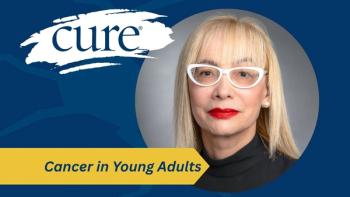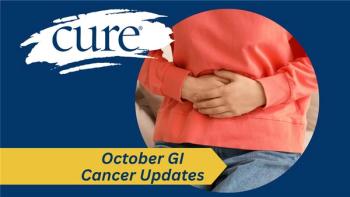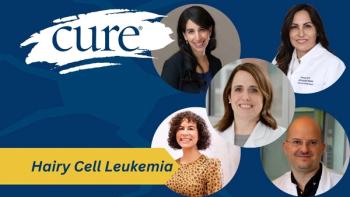
Kymriah May Be Safe and Effective in Children and Young Adults With Acute Lymphoblastic Leukemia Subtype
The immunotherapy Kymriah offered similar benefits in patients younger than and older than 18 years with relapsed/refractory B-cell acute lymphoblastic leukemia.
The use of the CAR T-cell therapy Kymriah (tisagenlecleucel) was effective with manageable side effects in patients with relapsed/refractory B-cell acute lymphoblastic leukemia regardless of whether patients were children or young adults, according to registry data.
Findings from this registry were presented at the 2021 ASH Annual Meeting & Exposition.
In particular, Kymriah “is an autologous T-cell product directed against CD-19,” Dr. Samuel John, division chief of hematology/oncology and Distinguished Chair in Pediatric Oncology Research at UT Southwestern Medical Center in Dallas, Texas, said during the presentation. “The T cells identify and kill the patient's leukemia cells.”
In this study, researchers analyzed data from the Center for International Blood and Marrow Transplant Research (CIBMTR) Registry of 561 patients up to age 25 years with relapsed/refractory B-cell acute lymphoblastic leukemia.
“Acute lymphoblastic leukemia is the most common form of childhood cancer,” John said during the presentation. “This specific subtype, (B-cell acute lymphoblastic leukemia), accounts for greater than 80% of cases. Although the majority of pediatric patients with (B-cell acute lymphoblastic leukemia) have excellent outcomes, approximately 15% to 20% of patients will relapse. Outcomes for these patients are poor, with (a) five-year survival estimate of approximately 50%. Treatment options in the relapsed setting include intensified chemotherapy regimens, stem cell transplant and use of novel immunotherapy including chimeric antigen receptor T cells.”
All patients in this registry were treated with Kymriah after August 30, 2017 either in the United States or Canada. Data were compared with the ELIANA trial, which was conducted before the treatment was approved for this indication.
“(Kymriah) was approved in 2017 for the treatment of pediatric and young adult patients up to the age of 25 with relapsed refractory (B-cell acute lymphoblastic leukemia),” John explained in the presentation. “The CIBMTR collects data on these patients who received commercial (Kymriah). Early real-world data for (Kymriah) from the CIBMTR registry reported similar efficacy to that in the ELIANA clinical trial with no new safety signals.”
Researchers performed age-specific analyses in patients younger than (389 patients) and older than 18 years (172 patients) at the time Kymriah was administered. Efficacy was evaluated in patients with at least 12 months of follow-up and included duration of response (the time a tumor responds to treatment without spreading or growing), overall response (patients with a partial or complete response to treatment), relapse-free survival (the time after treatment that a patient survives without signs or symptoms of cancer), event-free survival (the time after treatment that a patient is free from complications that the treatment was meant to delay or prevent) and overall survival (the time a patient with cancer is still alive). Patients who completed the first assessment at 100 days were part of the safety evaluation in this study.
Although most patient characteristics were comparable at the start of the study, there were some factors that differed by age group. Patients aged 18 years and older had greater disease burden than those younger than 18. In addition, older patients were more likely to be heavily pretreated before infusion versus the younger patients.
Efficacy in this study was assessed in 410 patients for a median of 25.9 months. Overall response rates in this registry were 86.8% compared with the 82.3% found in the ELIANA trial. Minimal residual disease status information was available for 195 patients, of whom 97.9% were considered minimal residual disease negative.
Event-free survival at 12 months in patients with available efficacy information was 52.6% compared with 57.2% from the ELIANA trial. In addition, the duration of response at 12 months was comparable in both studies (61.4% vs. 67.4%, respectively).
At 12 months, relapse-free survival was 62.5% compared with 66% from the ELIANA trial. Both age groups had similar rates of relapse-free survival and overall survival.
Researchers assessed safety in 493 patients for a median of 23.9 months. Most side effects were observed within the first 100 days of infusion. Safety outcomes in patients from the CIBMTR registry were more favorable than those from the ELIANA trial.
“This may be related to a lower disease burden prior to T-cell infusion for patients treated with commercial (Kymriah),” John said during the presentation.
From the registry, 22.9% of patients had prolonged neutropenia (low levels of a type of white blood cell called neutrophils) and 21.9% had prolonged thrombocytopenia (low levels of platelets that can lead to easy bruising and excessive bleeding). Safety data were mostly similar across age groups, although more patients aged 18 years and older had any-grade cytokine release syndrome (condition that may occur after certain types of immunotherapy that may result in fever, headache, nausea, low blood pressure, rapid heartbeat and trouble breathing) or neurotoxicity (nervous system damage). These side effects were subsequently treated.
“Ongoing accrual of patient data into the CIBMTR registry will provide further insights into the use of (Kymriah) in the real-world setting,” John concluded.
A version of this article originally appeared on OncLive as "
For more news on cancer updates, research and education, don’t forget to




